At OGT, we’re always keeping a keen eye on regulatory affairs in the life science and healthcare sectors, especially those surrounding In Vitro Diagnostics (IVD). In fact, regulatory oversight and diligence are central to all our operations, ensuring that our products comply with worldwide regulations and continue to provide researchers and clinicians with the most reliable FISH, microarray and NGS solutions possible.
Although IVD regulations are among the most stringent of regulations we work to at OGT, the framework that is put in place ensures that all IVD devices on the market are safe and reliable, bringing numerous benefits to labs and patients alike. First and foremost, it ensures patient safety - protecting patients from potentially harmful diagnostic errors or incorrect results that could lead to inappropriate treatments. For labs, regulations help by promoting standardization in the design, performance and data reporting of IVD devices. This makes it easier for labs to integrate IVDs into their workflows and yield consistent and reproducible results. Finally, for manufacturers like us at OGT, the rigorous testing and validation involved provides confidence in the diagnostic results produced by our devices.
The new European IVD Regulation (EU) 2017/746 (IVDR) has been applied since 26 May 2022, replacing the old European IVD Directive 98/79/EC (IVDD). The new regulatory framework requires manufacturers of IVD medical devices to meet a host of new stringent requirements surrounding product safety and performance, manufacturing systems, clinical evidence, post-market follow-up and more. To avoid the anticipated backlog of IVDR conformity assessments and provide our customers with IVDR products as quickly as possible, OGT committed early to IVDR and began discussions with a notified body, BSI, back in 2019. Since then, OGT has been working tirelessly to be 100% IVDR-ready and to meet conformity requirements under the regulation.
In March 2023, the hard work paid off when the first group of CytoCell FISH probes were granted IVDR certification – making OGT the very first manufacturer of FISH probes to be granted this accreditation. To learn more about OGT’s long-standing expertise in healthcare regulation, and the journey towards IVDR certification, we spoke with our Executive Vice President of Regulatory, Medical and Quality Affairs, Steve Chatters, to share his insights and perspectives.
 “I head up the quality assurance, quality control, regulatory affairs and medical affairs teams at OGT. These teams work together to ensure that our products comply with an ever-changing regulatory landscape, and that we meet the needs of clinicians and patients alike with the highest quality IVDs.
“I head up the quality assurance, quality control, regulatory affairs and medical affairs teams at OGT. These teams work together to ensure that our products comply with an ever-changing regulatory landscape, and that we meet the needs of clinicians and patients alike with the highest quality IVDs.
I’m interested in healthcare regulation because it’s been ever present throughout my professional life as a state-registered clinical scientist. Before joining OGT, I worked in NHS cytogenomic laboratories, where a significant part of my role was quality management, so I've always had regulatory matters in mind. Like many of my colleagues, coming to OGT was a natural progression from the clinical world because you can see the end result; you recognise the patient safety aspects, the need for controlled, consistent testing, and the requirement for a reliable product that works every time. Understanding this endpoint is at the core of all our regulatory affairs, and is recognised not just by my team, but all teams throughout OGT – we’re all striving for clinical excellence.”
“Each team has a different role to play, but are very much aligned and share the same goal. The quality team is there to administer the Quality Management System within the company, which includes QC and making sure that each OGT product that goes out the door is of consistent high quality. Additionally, the quality team holds all the documentation and makes sure our processes are kept strictly under control.
Then there’s the regulatory team, which oversees all the regulatory affairs and interactions with governing authorities. This team is responsible for creating all the technical documentation, such as those required for IVDR. Once regulatory approval has been granted, there's a host of additional responsibilities that must be met in order to keep products on the market, like making sure complaints get handled correctly and keeping track of any adverse events.
The third element is our medical affairs team. Many of our medical affairs scientists come from a clinical background, with expertise ranging from cytogenetics, to statistics, microscopy and more. This is our big powerhouse for generating analytical and performance data. While many manufacturers would outsource product performance testing, we find that having an experienced testing team in-house empowers us to gain deeper product insights and generate the appropriate evidence to get our products to market.”
“Without a doubt, we're seeing a global movement towards tighter regulation, and this is helping to improve product quality, patient safety and effectiveness. Also, it brings benefits to the clinical labs using these devices—as regulations like the IVDR improve the accuracy, reliability, and the overall quality of diagnostic tests. Although gaining regulatory approval is a huge undertaking for IVD manufacturers like us, we know that the end result will be worthwhile, with the ultimate goal to see safer IVDs being brought into the clinic and drive better patient outcomes.
At OGT, our products and manufacturing processes haven’t changed in the transition from IVDD to IVDR. The huge resources and expenditure required to evidence something that’s already been classified under IVDD might feel frustrating, but looking at the overall picture, I support the movement towards tighter regulation in the IVD space. At the end of the day, it’s about improving patient safety – and that can only be a positive thing.”
“As a manufacturer of IVDs, moving from the IVDD to the IVDR really meant that we had to generate a lot more clinical evidence and performance evaluation data. The amount of clinical evidence documentation now required cannot be overstated – you must detail every aspect of where the product has been used, evidence of how it works in a clinical context, how it performs in terms of stability and reproducibility. While it takes a great deal of work, this additional pre-market testing and validation helps to minimise the risks associated with inaccurate or unsafe tests, ultimately benefiting both laboratories and patients.
One of the major changes under the IVDR, from the IVDD, was the new emphasis on post market studies. Once we've got the product on the market, they must be maintained under the IVDR, which is another significant undertaking. We’re now required to have IVDR audits annually in addition to our ISO 13485 audits, to show that we're complying with the regulation. This entails post-market surveillance detailing how each product performs in the clinic, design reviews to make sure the design remains ‘state of the art’, scientific paper reviews to make sure our probe targets are still relevant in diseases, and much more besides. Without a doubt, all of this has been valuable, since it ensures that our customers can be 100% confident that they’re buying the most relevant and up-to-date diagnostic devices possible.”
“When we started getting ready for IVDR three years ago, we faced a big challenge as there was very little guidance/information to draw upon. Nobody had produced a similar product to IVDR specification before. However, thanks to the outstanding commitment of my team, we were able to successfully navigate this new regulatory landscape.
One of the major changes was that we were obliged to have regular interactions with our notified body, which we’ve never had to do before. We had no idea how to interact with the notified body or what evidence was required, since IVDR doesn't allow for consultation with them. My team really stepped up to the challenge, and I believe that their hard work and persistence in those early days was one of the biggest contributing factors to us being the first FISH probe manufacturer to achieve IVDR status. In the last year or so, there has been a lot more guidance. But certainly, when we started out, we were plotting our own path and had to generate everything from scratch which is a big achievement.”
“In my opinion, the level of regulation feels about right, but there could perhaps be more room for innovation. One of the things that the IVDR possibly makes more difficult is the development and testing of novel IVDs. Under the IVDR, there is some allowance for novel tests to be developed by health institutions, but the hoops that the institution has to jump through to service these tests can be quite onerous – they would have to almost do what a manufacturer would do in terms of compliance, general safety and performance requirements. It can be limiting for these smaller labs seeking to develop in-house tests.
Now that the UK has left the EU, the IVDR doesn’t apply to the UK market (excluding Northern Ireland), so now the UK will need to write another set of regulations called the UK MDR, which are still based on the old EU Directives. Perhaps this could be an opportunity to foster more research and innovation. We could look at doing something akin to the system in place in the USA, where you have regulated products that act as building blocks that can be used to develop diagnostics. They're essentially regulated components that allow smaller labs to create diagnostic tools.”
“Getting the first tranche of probes through IVDR certification was certainly demanding, but now we've got the program rolling, we’re getting used to the process. From development team, to production, operations, the medical affairs team, the marketing team, we’ve all contributed to delivering IVDR, and that’s testament to our great body of knowledge at OGT. Whilst it hasn’t been an easy journey, it has given us even more confidence in the relevance, safety and reliability of our IVDs, and we hope that this translates into improved patient outcomes. Hats off to my team, because getting these products through IVDR and available to customers—I would say without a shadow of a doubt—is one of the company's most significant achievements.”
Steve continues to lead the way for regulatory affairs at OGT, and thanks to the hard work of him and his team, OGT continues to embody clinical excellence by producing certified, safe and high-performance IVDs.

We sit down with two of our Field Application Scientists, Ashley Hart and Jenny Morse, to discuss the technical expertise they offer to OGT customers all over North America. And we chat with one of our customers, Kathleen Kretkowski, about a real-life example of OGT support in action.
Read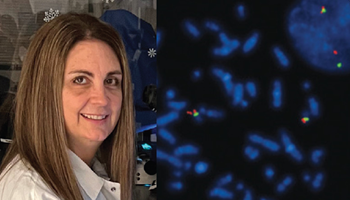
Tina Stafki talks about how she got hooked on FISH early on in her career, how she uses FISH in the CellNetix pathology lab to help patients and clinicians across the Pacific Northwest, and why CytoCell® FISH probes from OGT are her first choice when it comes to FISH probes.
Read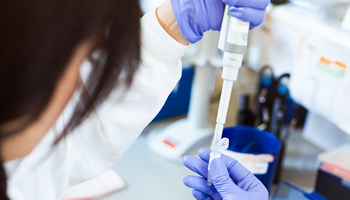
Designing in situ probes for hybridization assays can be a tricky, time-consuming task. Read our blog to discover five tips for effective probe design!
Read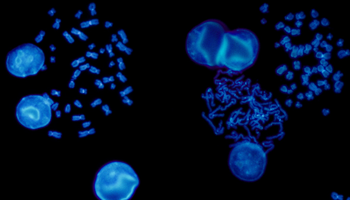
FISH is a cytogenetic technique utilized in labs to detect chromosomal abnormalities in both cancer and constitutional specimens. In this blog learn about the advantages of FISH...
Read
Dr. Theresa C. Brown, Tulane University School of Medicine, answer questions around her AGT 2017 presentation 'FISHing with the real-life laboratory experts.'
Read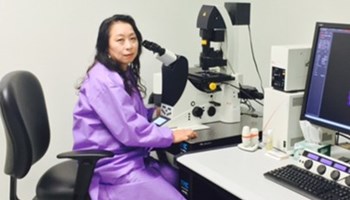
Megumi Hada, PhD, Senior Research Scientist, RaISE, Prairie View, Texas A&M. answers our questions on space radiation, how it affects astronaut health, and what her research can teach us about the biological effects of radiation here on Earth.
Read
Dr Jennie Thurston, Director of Cytogenetics, Carolinas Pathology Group, Atrium Health, explains how OGT's CytoCell® FISH probes were seamlessly incorporated into the automated workflow for fast, high quality results.
Read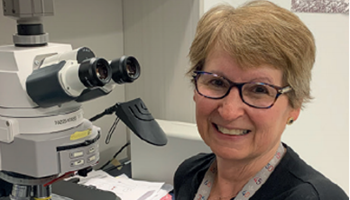
Carmen Vokaty, Assistant-Chief Medical Technologist in Cytogenetics at the McGill University Health Centre, details how her lab incorporated OGT’s CytoCell® Tissue Pretreatment kit into its workflow after struggling with a homebrew solution.
Read